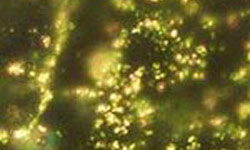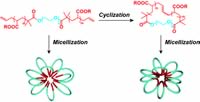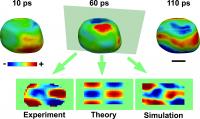Science
Boeing Completes New Spacecraft, Rocket Milestones

The CST-100 spacecraft awaits liftoff aboard an Atlas V launch vehicle in this artist's concept.
- Read more
- 424 reads
NASA's WISE Mission Finds Lost Asteroid Family Members

This artist's conception shows how families of asteroids are created. Over the history of our solar system, catastrophic collisions between asteroids located in the belt between Mars and Jupiter have formed families of objects on similar orbits around the sun.
http://www.jpl.nasa.gov/news/news.php?release=2013-179&rn=news.xml&rst=3806
內湖道館2021陳鵬程
- Read more
- 391 reads
NASA IRIS: Improving Our View Of the Sun

This image from the Japan Aerospace Exploration Agency’s Hinode mission shows the lower regions of the sun’s atmosphere, the interface region, which a new mission called the Interface Region Imaging Spectrograph, or IRIS, will study in exquisite detail. Where previous missions have been able to image material at only a few predetermined temperatures in this region, IRIS will observe a wide range of temperatures from 5,000 kelvins to 65,000 kelvins (8,540 F to 116,540 F), and up to 10 million kelvins (about 18 million F) during solar flares. Its images will resolve structures down to 150 miles across.
- Read more
- 390 reads
Diamonds, nanotubes find common ground in graphene: Hybrid created by Rice, Honda Research Institute shows nanotubes can grow on anything

Rice University and the Honda Research Institute use single-layer graphene to grow forests of nanotubes on virtually anything. The image shows freestanding carbon nanotubes on graphene that has been lifted off of a quartz substrate. One hybrid material created by the labs combines three allotropes of carbon – graphene, nanotubes and diamond – into a superior material for thermal management.
- Read more
- 444 reads
Biodegradable Nanocomposites Synthesized for Food Stuff Packaging

- Read more
- 377 reads
A new self-assembled nanostructure that can survive very hot or saline environments

Fig. 1 The team used linear and cyclic block copolymers to create flower-shaped micelles. The cyclic-based micelles withstood considerably higher temperatures and salinity levels, and could have numerous applications in industry and green chemistry.
- Read more
- 421 reads
Gold nanocrystal vibration captured on billion-frames-per-second film

The acoustic phonons can be visualized on the surface as regions of contraction (blue) and expansion (red). Also shown are two-dimensional images comparing the experimental results with theory and molecular dynamics simulation. The scale bar is 100 nanometers.
- Read more
- 392 reads
How do cold ions slide

Ions on optical lattice
- Read more
- 480 reads
Galaxies Fed by Funnels of Fuel

Created with the help of supercomputers, this still from a simulation shows the formation of a massive galaxy during the first 2 billion years of the universe. Hydrogen gas is gray, young stars appear blue, and older stars are red. The simulation reveals that gas flows into galaxies along filaments akin to cosmic bendy, or swirly, straws.
- Read more
- 328 reads
Human Rights
Fostering a More Humane World: The 28th Eurasian Economic Summi

Conscience, Hope, and Action: Keys to Global Peace and Sustainability

Ringing FOWPAL’s Peace Bell for the World:Nobel Peace Prize Laureates’ Visions and Actions

Protecting the World’s Cultural Diversity for a Sustainable Future

Puppet Show I International Friendship Day 2020


